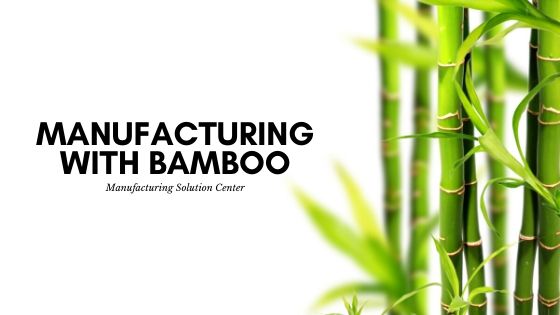Manufacturing with Bamboo
Bamboo as a raw material in manufacturing is incredibly lucrative. The uses of the plant range from toothpicks to fabrics, dishes to building supplies. Its sustainable, bamboo can grow up to four feet PER DAY and only requires sunlight, water and soil to flourish.
Bamboo plantations are rapidly increasing, particularly in the tropical and subtropical regions. For some of the economically challenged countries, these plantations provide an economic booster. Since these plantations provide favorable economic possibilities, it also positively impacts the export business for the native countries. Each product made with bamboo requires diverse manufacturing facilities, therefore growing the native economy by providing multiple factories, creating more jobs and enrichening lives.
There is a natural antimicrobial property to bamboo. This is especially important in the manufacture of plates, bowls and cutlery. Fabrics are also beneficial for the antimicrobial property of bamboo since the fibers inside of the bamboo are composed of cellulose. The cellulose is mechanically separated and treated with sodium hydroxide. The fibers are then chemically bleached and bonded with carbon disulfide. Unfortunately, the chemical use with the bamboo is not environmentally friendly, but it is the favored method.
For a more environmentally friendly approach, the bamboo cellulose fiber is extracted without chemicals. Bamboo is first crushed, then natural enzymes are added. The natural enzymes break down the bamboo and the fibers are combed out. This method is incredibly time consuming but is awarded the well-coveted “organic” seal of approval.
Bamboo stalks contribute to the manufacturing of bamboo flooring and composite. The bamboo itself needs to be aged at least six years before harvesting for flooring. As in any timber manufacturing, the bamboo is split and sliced. Color may be deepened by steaming the bamboo, although a side effect of steaming is a softening of the bamboo material. After steaming, the bamboo is kiln dried. Typically, large amounts of formaldehyde (a carcinogen) is used in the glues used to bind the pieces of bamboo together for the flooring product. Assembled pieces are then milled to set size requirements and sealed.
There are a few concerns when manufacturing with bamboo mainly due to the chemicals used for flooring, composite and textiles. The procedures could create toxic byproducts which are emitted into the air and water supply. Farmers, in struggling nations, end up abandoning food crops in the more lucrative bamboo farming practices. Most of these nations have little to no regulations or standards when growing bamboo. This adds to pollution and threaten human health. Once government regulations develop for these nations manufacturing bamboo, bamboo will be able to surpass cotton as the preferred fiber. This is mainly due to the limited amount of land and resources bamboo needs as opposed to cotton that requires more land and resources.



Leave a Reply
Want to join the discussion?Feel free to contribute!